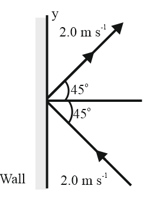A shell is shot with an initial velocity of at an angle of with the horizontal. At the top of the trajectory, the shell explodes into two fragments of equal mass in the figure shown below. One fragment, whose speed immediately after the explosion is zero, falls vertically. How far from the gun does the other fragment land, assuming that the terrain is level and that air drag is negligible?
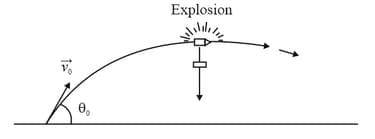


Important Questions on Center of Mass and Linear Momentum
In the figure shown below, two particles are launched from the origin of the coordinate system at time . Particle 1 of mass is shot directly along the x-axis on a frictionless floor, with constant speed . Particle 2 of mass is shot with a velocity of magnitude at an upward angle such that it always stays directly above particle 1. (a) What is the maximum height reached by the com of the two-particle system? In unit-vector notation, what are the (b) velocity and (c) acceleration of the com when the com reaches
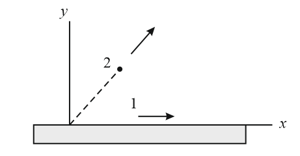
The figure shows an arrangement with an air track, in which a cart is connected by a cord to a hanging block. The cart has mass and its center is initially at -coordinates the block has mass and its center is initially at -coordinates . The mass of the cord and pulley are negligible. The cart is released from rest and both the cart and the block move until the cart hits the pulley. The friction between the cart and the air track and between the pulley and its axle is negligible. (a) In unit-vector notation, what is the acceleration of the center of mass of the cart-block system? (b) What is the velocity of the com as a function of time ? (c) Sketch the path taken by the com (d) If the path is curved, determine whether it bulges upward to the right or downward to the left and if it is straight, find the angle between it and the -axis.
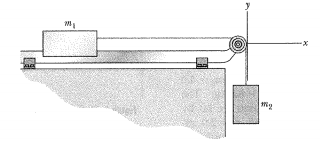
In the figure shown below, dog stands on a flatboat at distance from the shore. It walks along the boat towards the shore and then stops. Assuming no friction between the boat and the water, find how far the dog is then from the shore.
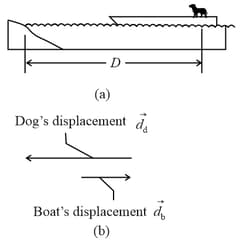
A motorbike moves along AB at and after some time, the motorbike turns to travel along BC at the same speed, as shown in the figure. Find
(a) the change in its kinetic energy and the
(b) magnitude and (c) direction(relative to +x of the change in its momentum).
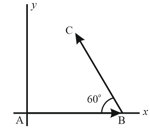
At time a ball is struck at ground level and sent over level ground. The momentum versus during the flight is given by in figure shown below(with and
At what initial angle is the ball launched? (Hint: Find a solution that does not require you to read the time corresponding to the low point of the plot.)
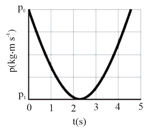
A ball of mass moving with a speed of strikes a wall at an angle of incidence and is reflected from the wall at the same angle and with the same speed. See the overhead view in figure shown below. Calculate (a) the magnitude of the change in the momentum of the ball, (b) the change in the magnitude of the momentum of the ball, and (c) the change in the magnitude of the momentum of the wall.
